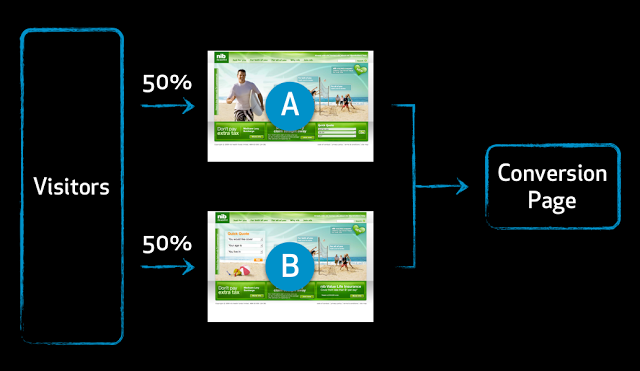Back to Basics: What is Conversion Rate Optimisation?
Loves Data
image00
Conversion Rate Optimisation is the process of improving your website to drive visitors towards desired actions — actions such as buying a product, filling out a lead generation form, or signing up for a mailing list. Conversion centered design not only helps you increase conversion rates, but it also plays a massive role in improving the user experience of your page which can transform visitors into customers.
Conversion Optimisation through A/B Testing
One of the most effective ways of optimising conversion rates is through A/B testing. This is the process of splitting visitors between two variations of a web page and comparing the conversion rate of each variation. This can be used to test very different versions of pages, or for smaller design components such as the design of a form, placement of a call to action, a sign up to a newsletter or something as simple as a colour scheme or headings. A/B testing is a great tool for designers and web developers as it enables them to remove personal opinion and instead, base design decisions on real data from the site visitors.
Let’s look at an example. We could create an A/B test that tests the placement of an email call to action button on our ‘Contact Us’ page. On one version the call to action could be below the fold and on the other the call to action could be above the fold. The call to action above the fold may increase conversions by 45%. But that does not mean that we can expect to see similar results for all other pages. If you apply the same positioning to another landing page, say, for training seminars, the call to action below the fold could create a higher conversion rate. This might be because visitors need more information before they will pay to attend a seminar than they do to simply send an email.
Starting the Test Process:
The single most important thing to consider when designing a landing page is to establish the primary objective of the page. Is this page driving online sales, donations, enquiries? Identify what it is that you want visitors to do when they arrive on your site. This is the action that we will test. After the objective of the page has been established list out all of the elements the page will require in order to achieve this goal. Listing the different elements will allow you to create the hierarchy of your elements, but it will also help you to remove any unnecessary elements from the page that don’t support the pages primary objective. Once you have a list of all the elements for the page it is important to match these with clear and concise content. If the content is short, easy to digest and relevant to the page objective, in most cases, this will help improve the engagement levels of your visitors, the more engaged visitors are with your page will increase your chances of creating a conversion. It is important to note that this is not always the case, sometime more content works better. It is always important to test!
The placement of elements on your page should be done in a way that helps direct your visitors to the most important elements. Key elements of your message should be given prime position, this means they should generally be placed above the fold to ensure maximum visibility and attract attention from your visitors. Testing the placement of key elements on a page is a great way to see what works best for you customers but also for individual pages within your site.
Keep on Testing!
It is important to note that conversion rate optimisation is an ongoing process. You should always be testing to ensure you maintain a high conversion rate for all of your pages. Just because a page has been performing well, doesnt mean in 6 months or even a year that the page will still be performing well.
Tips & Tricks
- Establish the primary objective of your page.
- Apply design principles (colour, layout, size etc) to create a visual hierarchy to attract attention to the key elements of your message.
- Ensure your copy and content is relevant to you page objective, remove any unnecessary elements.
- A/B testing is an ongoing process, never stop testing!


Comments